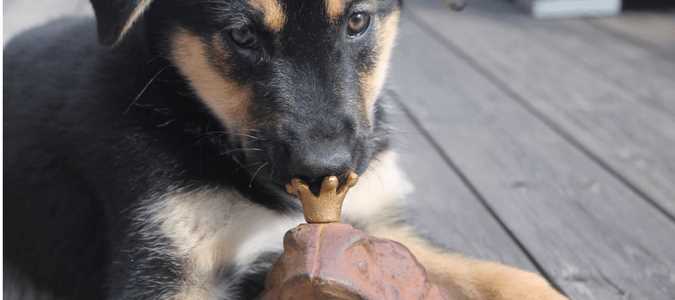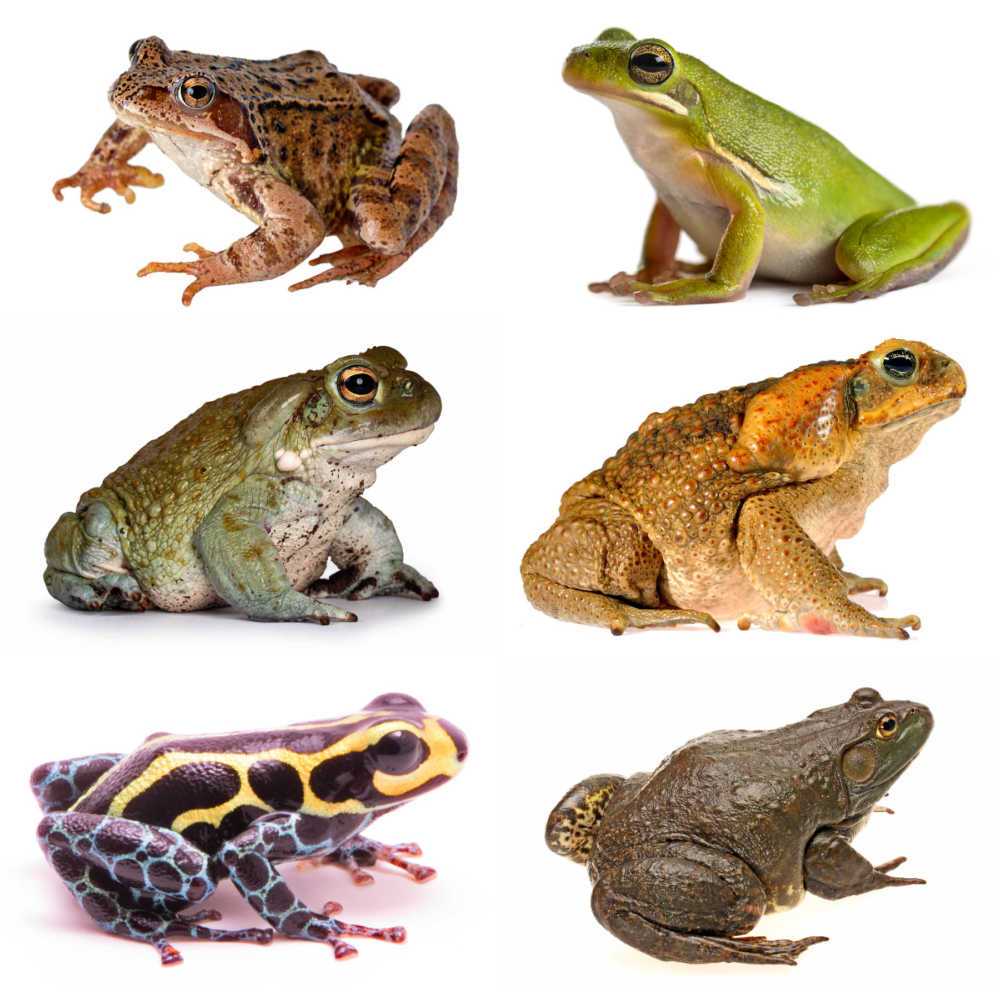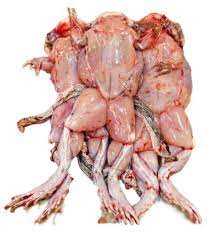For many dog owners, the safety of their canine companion is of utmost importance. They want to ensure that their furry friend is not exposed to any potential dangers, including the foods they consume. One common question that often arises is whether dogs can safely eat frogs.
The short answer is no. While some dogs may show interest in frogs and even try to catch them, it is generally not recommended for dogs to eat frogs. There are several reasons for this.
First and foremost, frogs can be toxic to dogs. They secrete toxins through their skin, which can be harmful if ingested. Even if a dog manages to catch a frog without being poisoned, there is still a risk that the frog may have been exposed to pesticides or other chemicals that could be harmful to your pet.
In addition, frogs can also transmit parasites to dogs. These parasites can cause a range of health issues, including digestive problems and infections. It is best to avoid exposing your dog to the potential risks associated with eating frogs.
Can Dogs Safely Eat Frogs?

While some dogs may be able to safely consume small amounts of frogs without any adverse effects, it’s generally recommended to keep dogs away from eating frogs. There are a few reasons for this:
- Potential for toxicity: Some frogs secrete toxic substances through their skin, which can be harmful or even deadly to dogs. These toxins, such as bufotoxin, can cause a range of symptoms including drooling, vomiting, difficulty breathing, and even seizures.
- Risk of infection: Frogs may carry bacteria or parasites that can cause infections or diseases in dogs. Salmonella and various parasites are examples of potential pathogens that can be transmitted through frog consumption.
- Choking hazards: Frogs have small, fragile bones that dogs may not be able to properly chew or digest. This can lead to choking or other gastrointestinal issues.
Even if your dog has previously eaten frogs without any apparent problems, it’s best to err on the side of caution and discourage this behavior. Supervision and prevention are key in ensuring your dog’s safety around frogs.
If you suspect that your dog has eaten a toxic frog or is showing symptoms of frog poisoning, it’s crucial to seek veterinary attention immediately. Prompt treatment can greatly increase the chances of a successful recovery.
Ultimately, it’s always best to consult with your veterinarian to determine whether it is safe for your dog to eat frogs. They can provide specific advice based on your dog’s individual health, age, and any underlying conditions that may affect their ability to safely consume frogs.
Potential Risks of Feeding Frogs to Dogs
2. Choking hazards: Frogs have hard and slippery bodies, making them potential choking hazards for dogs. If a dog tries to swallow a frog whole, it may get stuck in their throat, causing choking or other serious complications.
3. Infections: Frogs can carry bacteria, parasites, and other pathogens that can be harmful to dogs. Ingesting a frog can expose a dog to these microorganisms, which can lead to various infections and illnesses.
4. Allergic reactions: Some dogs may have allergies to frogs or their secretions. If a dog comes into contact with a frog or ingests it, it may experience an allergic reaction, which can range from mild irritation to a severe allergic response.
5. Intestinal blockage: If a dog manages to swallow a larger frog whole or in large pieces, it could potentially cause an intestinal blockage. This can be a life-threatening condition that requires immediate veterinary attention.
Conclusion
While frogs may be a source of curiosity for some dogs, it is crucial for pet owners to understand the potential risks associated with allowing dogs to eat frogs. Toxicity, choking hazards, infections, allergic reactions, and intestinal blockage are some of the main dangers that come with this behavior. It is essential for dog owners to take precautions, such as keeping their dogs away from poisonous frogs and seeking veterinary care if their dog comes into contact with a frog or displays signs of frog poisoning.
Types of Frogs That Are Toxic to Dogs
Poison Dart Frogs
The toxins found in poison dart frogs are highly potent and can cause serious harm to dogs. If a dog ingests a poison dart frog, it may experience symptoms such as drooling, vomiting, diarrhea, seizures, and even death.
Cane Toads
If a dog comes into contact with the toxic secretion of a cane toad, it can cause symptoms such as excessive drooling, red and swollen gums, difficulty breathing, trembling, and seizures. In severe cases, cane toad poisoning can be fatal for dogs.
Other Toxic Frogs
Signs and Symptoms of Frog Poisoning in Dogs
What are the signs and symptoms of frog poisoning in dogs?
When a dog consumes a poisonous frog, it may exhibit various signs and symptoms. These can include:
- Vomiting and Diarrhea: One of the first signs of frog poisoning in dogs is vomiting and diarrhea. The dog’s body tries to expel the poisonous substances through these natural mechanisms.
- Weakness and Lethargy: Poisoning can make dogs feel weak and lethargic. They may lose interest in activities they usually enjoy and have a reduced energy level.
- Abnormal Heart Rate: The toxins from frogs can affect a dog’s heart rate, leading to abnormalities in its rhythm. This can manifest as a rapid or irregular heartbeat.
- Changes in Mentation: Dogs may also exhibit changes in their mental state. They may appear disoriented, confused, or have difficulty coordinating their movements.
If you suspect that your dog has ingested a frog or is exhibiting any of these symptoms, it is crucial to seek immediate veterinary attention. Delaying treatment can worsen the dog’s condition and potentially lead to severe complications.
Remember, prevention is always better than cure. To keep your dog safe, it is essential to supervise them during outdoor activities, especially near bodies of water where frogs may reside. Additionally, consult your veterinarian for advice on safe alternatives to frogs as a food source for your dog.
Immediate Steps to Take if a Dog Eats a Frog
1. Stay Calm
It is natural to panic when your dog eats something potentially harmful, but it is vital to remain calm. Panicking can make it difficult to think clearly and take the necessary steps to help your dog.
2. Remove the Frog
If you witnessed your dog eating the frog, try to safely remove the frog from their mouth. Use gloves or a cloth to protect yourself, as some frogs may have defensive mechanisms, such as producing toxins or biting.
3. Rinse Your Dog’s Mouth
Gently rinse your dog’s mouth with water to remove any residue or toxins from the frog. Use a syringe or a small container to pour water into their mouth, ensuring that they do not swallow the water.
4. Watch for Symptoms
Monitor your dog closely for any signs or symptoms of distress. These can include drooling, vomiting, diarrhea, abdominal pain, difficulty breathing, or changes in behavior. If you notice any of these symptoms, contact a veterinarian immediately.
5. Contact Your Veterinarian
Even if your dog appears fine, it is still important to contact your veterinarian and inform them about the situation. They can provide further guidance based on the specific circumstances and advise whether further medical treatment is necessary.
6. Do Not Induce Vomiting
While inducing vomiting is often recommended in cases of accidental ingestion, it is not recommended if your dog has eaten a frog. Some species of frogs secrete toxins that can be harmful if they come into contact with your dog’s stomach lining or esophagus. Inducing vomiting may exacerbate the situation.
7. Follow Veterinary Advice
After consulting with your veterinarian, follow their advice regarding whether your dog needs to be seen for a physical examination or if any specific treatment is required. The veterinarian may recommend bringing your dog in for observation or suggest monitoring them at home.
Remember, prevention is always the best approach. Keeping your dog on a leash during walks and training them to avoid interactions with frogs can help minimize the risk of accidental ingestion and potential poisoning.
Diagnosing Frog Poisoning in Dogs
Your veterinarian will begin by conducting a thorough physical examination of your dog and obtaining a detailed medical history from you. They will ask questions about your dog’s behavior, any known exposure to frogs, and the onset and progression of symptoms.
In some cases, the veterinarian may be able to identify the type of frog based on your description or by examining the remains of the frog if it was vomited or brought in with your dog. This information can help inform the diagnostic process.
Diagnostic tests may be necessary to confirm frog poisoning. These tests can include blood work, urinalysis, and imaging studies such as X-rays or ultrasounds. Blood work can help assess your dog’s organ function and detect any abnormalities that could be indicative of frog poisoning.
In addition, your veterinarian may perform toxin screenings to identify the specific toxins present in your dog’s system. This can be done through blood, urine, or vomit samples. Knowing the exact toxins involved can inform the appropriate treatment plan.
Once a diagnosis is made, your veterinarian will discuss the treatment options with you and develop a plan to address your dog’s specific needs. Prompt veterinary intervention is crucial in cases of frog poisoning, as some toxins can cause severe and even life-threatening complications.
Remember, always consult a veterinarian if you suspect your dog has come into contact with toxic frogs. They can provide the appropriate care and guidance to ensure the safety and well-being of your furry friend.
Treatment Options for Frog Poisoning in Dogs
The exact treatment for frog poisoning may vary depending on the specific toxin involved and the severity of the symptoms. However, some common treatment methods for frog poisoning in dogs include:
- Inducing vomiting: In some cases, your veterinarian may induce vomiting to help expel the toxin from your dog’s stomach.
- Activated charcoal: Giving your dog activated charcoal can help absorb the toxins and prevent their absorption into the bloodstream.
- Supportive care: Your vet may provide supportive care to manage the symptoms of frog poisoning. This can include intravenous fluids to maintain hydration, medications to control nausea and vomiting, and monitoring vital signs.
- Specific treatment: In certain cases, your veterinarian may administer specific antidotes or treatments to counteract the effects of the toxins. This will depend on the type of toxin involved and the dog’s overall condition.
- Hospitalization: If your dog’s condition is severe, they may need to be hospitalized for intensive care and monitoring until they stabilize.
Preventing Dog-Frog Interactions

Here are some steps you can take to prevent dog-frog interactions:
| 1. Supervise your dog: | Always keep an eye on your dog, especially when outdoors. This will allow you to prevent any potential encounters with frogs. |
| 2. Secure your yard: | Ensure that your yard is securely fenced to keep frogs out. Patch any holes or gaps that could allow frogs to enter the yard. |
| 3. Remove standing water: | |
| 4. Keep your dog on a leash: | |
| 5. Know your surroundings: | Be aware of the natural habitats of frogs in your area. Avoid walking your dog near ponds, lakes, or marshy areas where frogs are more likely to be present. |
| 6. Teach the “leave it” command: | Train your dog to respond to the command “leave it.” This will help you redirect your dog’s attention away from frogs and prevent them from approaching or consuming them. |
| 7. Use deterrents: | Consider using pet-safe deterrents, such as sprays or ultrasonic devices, to keep frogs away from your yard and discourage your dog from approaching them. |
By taking these preventive measures, you can greatly reduce the chances of your dog coming into contact with frogs and minimize the risk of any potential poisoning or other adverse reactions.
Safe Alternatives to Frogs for Dogs
If you are concerned about the potential risks associated with dogs eating frogs, there are several safe alternatives that you can offer to your furry friend instead.
1. Commercial Dog Food: The safest and most balanced option for your dog’s diet is commercial dog food. It is specifically formulated to meet all of your dog’s nutritional needs and is free from any potential toxins.
4. Dog Treats: There are numerous dog treats available on the market that are specifically made for dogs and are safe for them to consume. These treats can be a tasty and healthy alternative to frogs.
5. Consult with Your Veterinarian: If you are unsure about what foods are safe for your dog, it is always best to consult with your veterinarian. They can provide personalized recommendations based on your dog’s specific needs and health condition.
Consulting a Veterinarian for Advice

Additionally, a veterinarian can provide you with safe alternatives to frogs for your dogs. They can recommend appropriate foods that are not only safe but also nutritious for your pet. They may suggest alternative protein sources or other options that can satisfy your dog’s nutritional needs without posing any health risks.
Remember, every dog is unique, and what may be safe for one dog may not be safe for another. Consulting a veterinarian is the best way to ensure the well-being and safety of your dogs. They can provide personalized advice and guidance based on your dog’s specific needs and circumstances.

I’m Lena Adams—a product of an unconventional upbringing in the African wilderness. My father, a daring explorer of African wildlife, sparked my fascination with reptiles, a passion that intertwined with the tragic loss of my mother during an expedition, leaving an indelible mark on my life. Driven to understand the creatures that captivated my parents, I embarked on my journey, sharing insights about reptiles, frogs, and lizards on my website. Through my explorations and conservation efforts, I honour my family’s legacy while seeking connections—to the creatures, nature, and the mother whose presence I yearn to understand.
